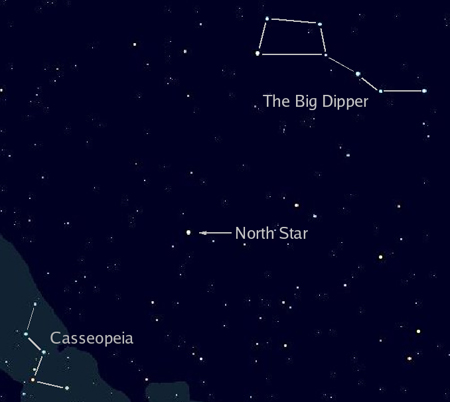How to Find the North Star

It is so romantic to examine the sky filled with billions of stars. Peering into the infinite points of scattering light, you must have thought about finding one particular star. Despite the seemingly impossible task, look for familiar constellations is not too difficult.
Polar Star is located on the northern point of the horizon in the Northern Hemisphere. This allows you to use it to determine the horizon. If you are in unfamiliar territory without a compass, the ability to find the North Star will help you to navigate the terrain.
Instructions
-
1
Look up at the sky and try to find the bright constellation that looks like a big bucket. This characteristic configuration of the seven bright stars is known as the Big Dipper. Most of the stars that make up the bucket have gloss second magnitude.
-
2
Select two stars of the parallelogram, located on the side opposite to the "handle" of the bucket. These are the stars: Dubhe and Merak (or "alpha" and "beta" of the constellation Ursa Major) respectively. These stars form a wall of the bucket and has long been called the "pointer".
-
3
On the imaginary line that passes through Merak and Dubhe, set aside five times a segment equal to the distance between the two stars. End of this segment will be approximately at the location of the North Star.
-
4
In order to verify the correct location of the North Star, you should know that it is the end-point of the small bucket - the constellation Ursa Minor. Polar Star practically does not change its location in the sky.
-
5
Finding the North Star, you can not only find out where is the north, but you can ascertain the geographical latitude of your location.
-
6
North Star is one of the brightest in the sky as it belongs to the constellation Ursa Minor. If you arm yourself with a pair of binoculars, you'll see a whole constellation. You can see a few faint stars along with the North star. If we connect them with lines, you get a parallelogram. Pay attention to the long chain of stars that stretches from the south in the direction of Perseus. This is the constellation of Andromeda.

